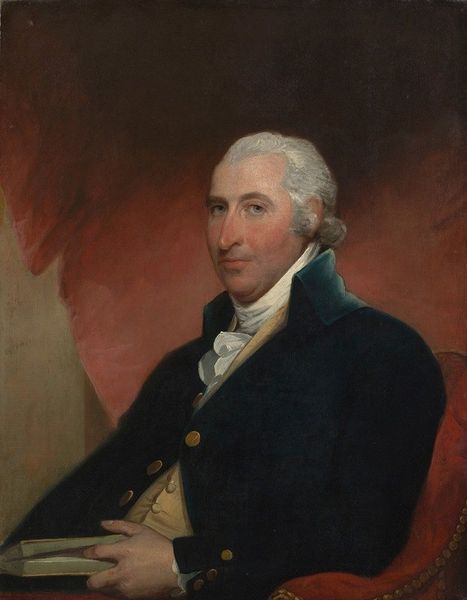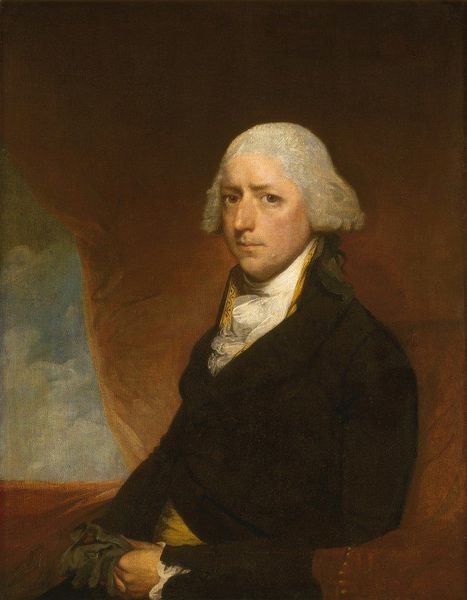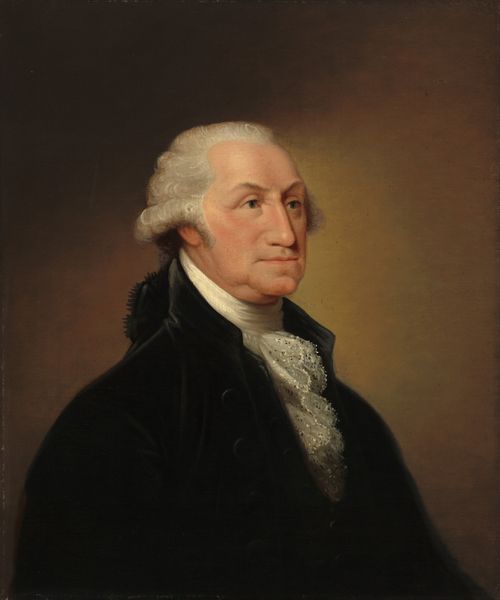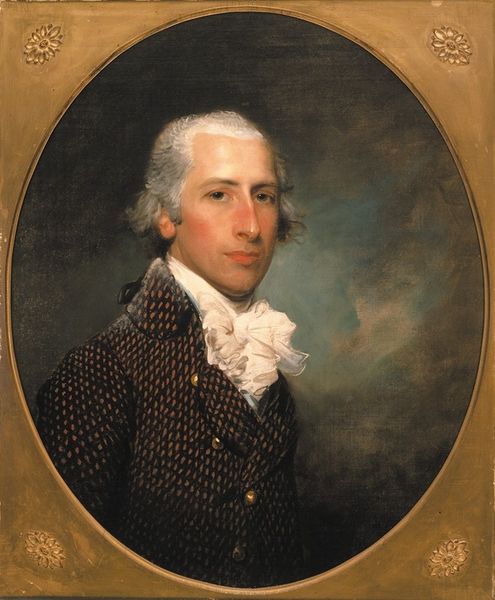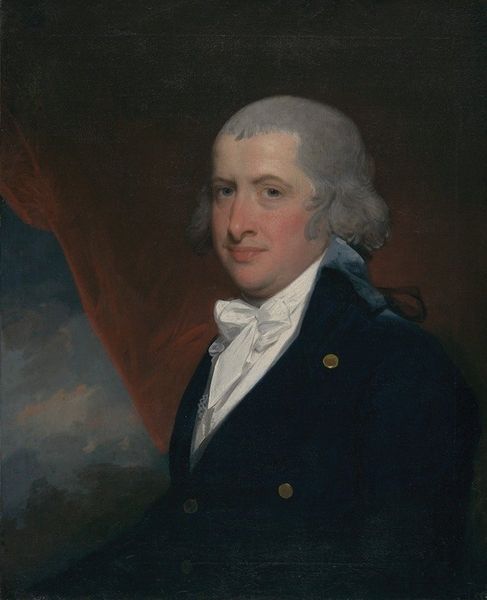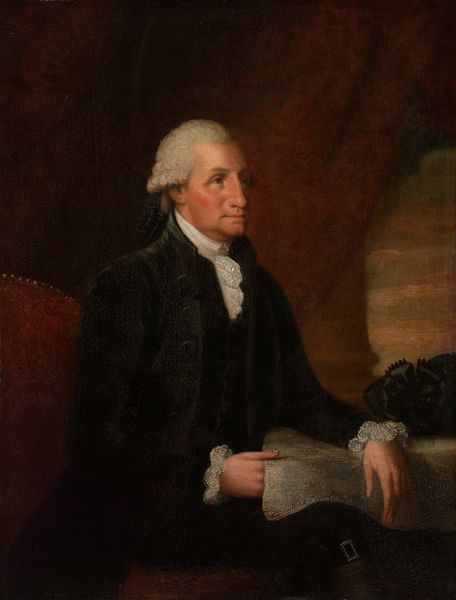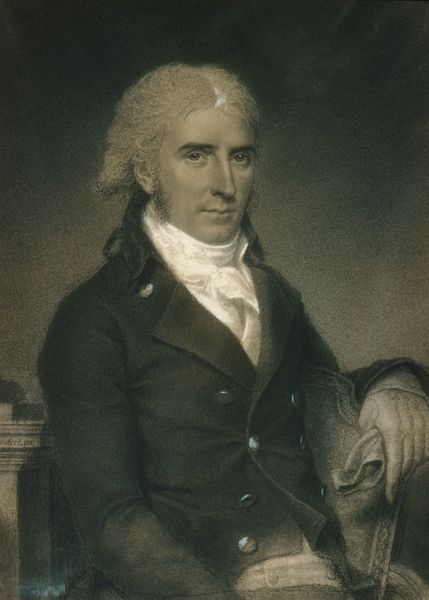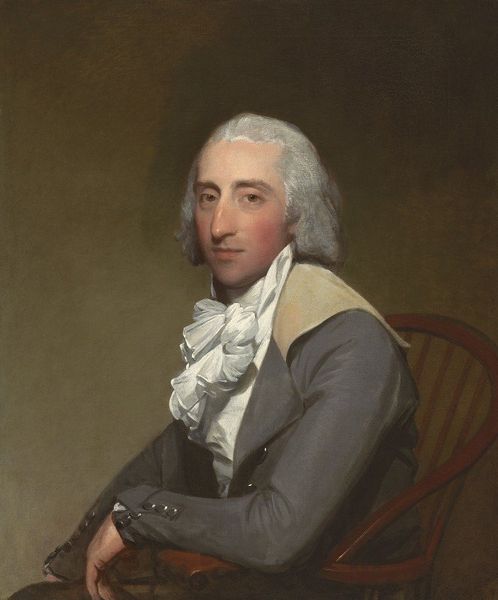
painting
#
figurative
#
neoclacissism
#
painting
#
realism
Copyright: Public Domain: Artvee
Editor: This is Gilbert Stuart's portrait of Stephen Van Rensselaer III, painted between 1793 and 1795. I'm immediately struck by how posed and formal it is; it’s very much of its time, but what jumps out to you? Curator: The portrait, beyond its surface representation of a wealthy landowner, opens a window into the complex socio-political landscape of the early American Republic. Consider the power dynamics embedded in portraiture of this era: who had access to it, and whose stories were being told? Van Rensselaer was a patroon, essentially a feudal lord in a supposedly democratic society. What does this image say about class and privilege in early America? Editor: I see your point. It feels almost like propaganda, meant to reinforce his status and power, even today. But, it is considered Neoclassical with an attempt at Realism; is there an ideological message there? Curator: Exactly! The neoclassical style, with its emphasis on order and reason, can be interpreted as an attempt to legitimize the existing power structure. The realism serves to make Van Rensselaer appear both authoritative and relatable, naturalizing his privileged position. Doesn't it make you wonder about the people who *weren't* deemed worthy of representation in art like this? Where are the voices of the enslaved people whose labor funded this lifestyle? Editor: That shifts the focus entirely! So much to unpack beyond just a face in a painting. I guess it tells more than one story! Curator: Precisely! This painting, seemingly straightforward, invites us to question whose stories are told and whose are erased within the dominant historical narrative. This is where art becomes a tool for social commentary. Editor: Wow, I'll never look at a portrait the same way again! I'm so glad you broadened my views to include a critical cultural lens to these works of art! Thanks.
Comments
No comments
Be the first to comment and join the conversation on the ultimate creative platform.

